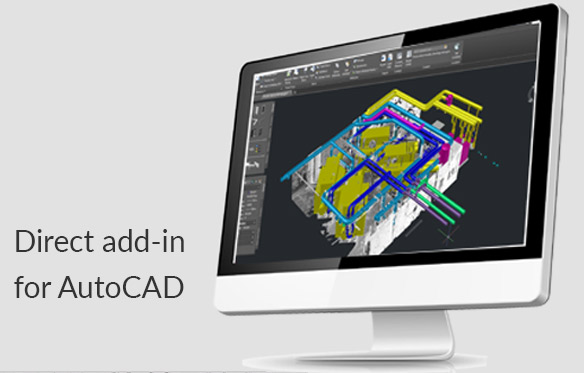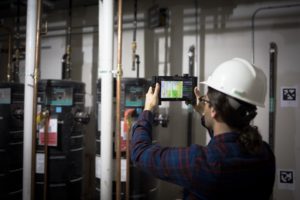ASSEMBLE + Point Cloud
Assemble Point Clouds allows users to compare the scanned point cloud data to the design and construction data for an improved QA/QC workflow. The point cloud data captured on the project can be easily shared via cloud through Assemble’s award winning cloud based platform Assemble Insight.
Improved QA/QC Workflow
By supporting point cloud data from integrated partners, Assemble Point Cloud empowers you to compare the point cloud data to the design and construction data in the cloud. Clashes are flagged, giving users the ability to to change the state of each clash identified for an improved QA/QC workflow. Having 3D design in the field allows you not only to see that there is a potential clash between installed equipment and other materials slated to be installed, it allows you to query the actual system in question providing a way to reduce mistakes
Improved Collaboration & Control
The cloud based platform allows project teams to collaborate on clashes in real-time. Project teams can check for clearance issues between two different systems and validate foundations for equipment before items are even brought to the job site.
BIM + Point Clouds
If you would like to learn more about Assemble Point Cloud, just fill out the form below.
CLASH DETECTION

Visualizing and managing clashes between as built and design data have never been easier.
A simple way of recognizing clashes between different models or within one.


EXTENSIVE EXPORT


DEVIATION REPORTS
Floor Flatness Heatmap along with Excel report made easy. Fast and quick QA for all equipment and installations.
CHANGE
MANAGEMENT
With one click group and colorized new construction and demolition. Clash new construction point cloud vs BIM to create progress report


SCAN
REGISTRATION
Precision can’t be over-emphasized:
- Spherical target
- Survey Target
- Cloud to Cloud
DEMOLITION
PLANS

Animate Demo
with Real-time
Clash Detection
Point Clouds and BIM Workflow Guide
Overlay as-built data on top of BIM and share it with all team members and owners – in a collaborative environment.
- To begin, define your use cases – common ones are listed below:

- Demolition
- Installation and Placement
- QA/QC
- Progress Tracking
- Next, obtain your data – there are two main ways to do this:
- Use your own equipment, either with tripod-based devices or handheld devices
- Tripods are more prevalent and are designed for bigger spaces; Scanners have 120-1000m range
- Handhelds are generally used for smaller rooms (e.g. mechanical room or closet) and have 10m range
- Hire a Scanning Service to come in and obtain your data; ensure that you have clearly specified your requirements for format, accuracy, and registration
- Use your own equipment, either with tripod-based devices or handheld devices
- Finally, understand the opportunity to avoid converting the Point Cloud – use the intelligence of the
 Assemble Desktop Application to provide 3D context:
Assemble Desktop Application to provide 3D context:
- Aid in recognizing shapes
- Tag them as objects and create point cloud component library
- Perform clash detection between CAD-to-CAD or Point Cloud-to-CAD
- Use animation tool to remove and move demolition objects
- Merge them with your current construction Building Information Model

